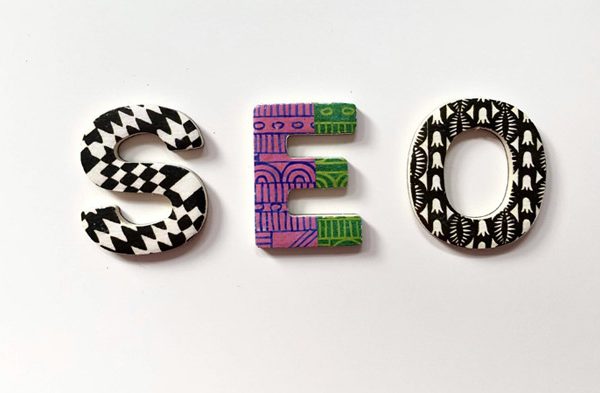As our attention spans get shorter, we naturally want simpler and more focused content.
This is where microsites in web design are useful. Unlike regular websites, microsites are simpler and easier to navigate. But that doesn’t mean they’re boring. The best ones keep you interested and exploring.
In this post, we will go through what a microsite is, the differences between microsites and landing pages, and the advantages and disadvantages of microsites. By the end, you will have a clear understanding of how microsites in web design can be a powerful tool for your online presence.
Related Articles:
What is a microsite?
As the name suggests, a microsite is like a miniature website, it is much smaller than a typical website. It‘s usually 2-3 web pages or a one-page website. A one-page website has proven to be an effective way to boost engagement. Having all the information in one place naturally creates a positive user experience, especially when the site is well-optimised for handheld devices, allowing for easy swiping and navigation.

What is the difference between a landing page and a microsite?
At first, these two marketing vehicles may seem nearly identical. A landing page is a single page, always published on its branded parent website. In contrast, a microsite can consist of multiple pages and may be published as part of the parent site or independently.
Landing pages are frequently used in online advertising campaigns, email marketing and social media promotions. They usually feature a focused message, minimal distractions and a clear call-to-action (CTA). The main goal of a landing page is to convert visitors into leads or customers by encouraging them to take specific actions, such as filling out a form, making a purchase or downloading a newsletter.
Microsites provide more extensive content and functionality compared to landing pages. They are ideal for raising brand awareness and are usually created to promote a company’s product, service, campaign or event.
Advantages of a microsite
Because of their immersive nature, they are ideal for focused storytelling about a single brand, product or service. Microsites are easier to develop and quicker to launch. They are naturally highly engaging due to their focused content. Users prefer not to spend time navigating through a complex main company website. Providing customers with what they want in a tidy, easy-to-navigate format keeps them engaged. Whether they are single-page websites or more complex, you can create as much or as little content as needed to keep customers interested in your brand. Microsites are highly shareable, easy to scan and perfect for creating targeted campaigns.

Disadvantages of a microsite
A microsite may not have as much information or features as a full website. This limited content can make it harder for users to find all the details they need. Also, having fewer pages and less content on a microsite can make it tougher to rank high in search engines. This is because there are fewer chances to use keywords that people search for, which affects how many visitors the site gets from search results. For many companies, particularly those on the smaller side, the benefits of microsites can outweigh these potential negatives.
Example of microsites in web design
This section will discuss where it is appropriate to use microsites in web design. We will focus on specific examples and situations where microsites are most effective.
Business microsites
Having a website is crucial for establishing an online presence, building your brand and achieving your business objectives. Business microsite is designed to enhance brand recognition and tell the company’s story. They can be particularly beneficial for smaller businesses looking to introduce themself and showcase specific products and services in a focused and engaging way on the internet. We have created several microsites, mainly for financial firms, such as Blakeney Management, Socci Capital, Alithea Capital and Pythia Sports.
Portfolio microsites
If you are a photographer, artist or writer, having a portfolio website can boost your chances with employers or clients, i tis like your online art resume. It typically includes images, videos or clips that showcase your best work. You can regularly update it with new projects and achievements to keep it current and showcase how you have grown over time. This not only highlights your skills but also strengthens your personal brand.

Startup microsites
Microsites are quicker and more affordable to set up and manage compared to larger websites, which is perfect for startups working with limited resources. They can help enhance your brand’s visibility and credibility. In the early stages, you might also include a crowdfunding page or explore other funding options. Ultimately, the goal is to attract both customers who believe in your product and investors who see the potential in your venture.
Personal microsites
While a portfolio microsite is great for showing off your work, a personal website is where you can truly express yourself. It’s your own space to share your achievements and build your personal brand. What you decide to include on your personal website depends on your goals. If you’re using it to boost your career, you might want to include a resume, samples of your work and a bio. If it is more about self-expression, a blog and links to your social media profiles could be all you need.
Consulting microsites
Do you have unique expertise that others could benefit from? Your microsite should include a list of services you offer, information about your background and an explanation of who would benefit from your services. For example, if you are a financial planner use your site to explain how you help clients create comprehensive financial plans to meet their long-term goals or if you are a career consultant describe how you can help individuals advance their careers through resume building, interview preparation and job search strategies.

Booking microsites
A booking microsite helps you get started quickly and efficiently. The microsite can be built to let users sign up for classes, accommodations or services online. Customers can pick their preferred date, time and price. These websites also include recommendations, reviews and contact information.
Educational microsites
Provides detailed information on a specific subject, often including tutorials, articles, videos, and resources for learning.
Event microsites
Event microsites are for promoting events like conferences, webinars, or festivals, including schedules, speaker bios, and registration forms.
There can be many other types of microsites, but we have presented those that we most commonly come across. Their ease of development and maintenance makes them an ideal choice for businesses looking to establish a strong online presence quickly – especially for startups, small businesses and specific marketing campaigns.
Reactive Graphics has designed and developed several effective microsites that load quickly and appeal to top clients. Feel free to reach out to discover more about our work.


